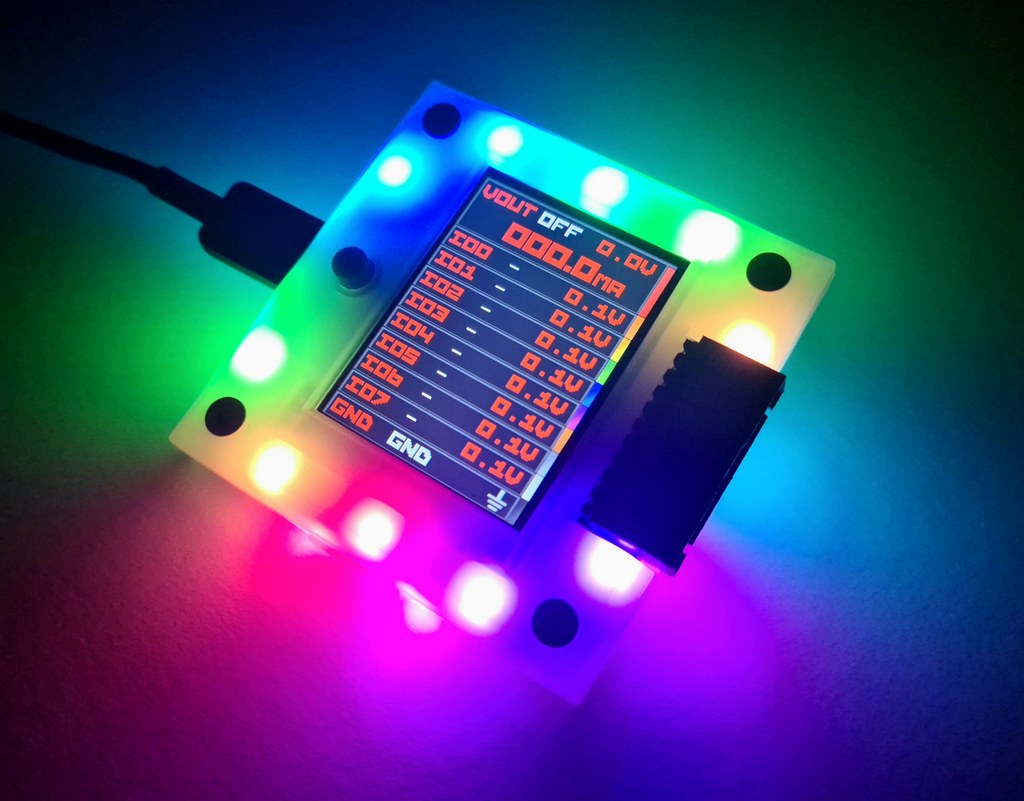Bus Pirate 5 Hardware Specs
See the latest version. This site is no longer maintained.
See the latest version for up-to-date documentation. Docs have been completely reworked and moved to a new location. The new site is more user-friendly and searchable. It's also easier for the developers to work with.

Bus Pirate 5 is the latest edition of the original universal serial interface trusted by hackers since 2008.
Can't get a chip to work? Is it the circuit, code, bad part or a burned out pin? The Bus Pirate sends commands over common serial protocols so you can get to know a chip before prototyping. Updated with tons of new features and tools, talking to chips and probing interfaces is more fun than ever!
RP2040
- Based on Raspberry Pi Foundation RP2040
- 128Mbit flash storage for lots of features
- Firmware developed with the Pico C language SDK
8 Buffered IO pins
- 1.65-5volt operating range, 3 state
- Voltage measurement on every pin
- Toggleable 10K pull-up resistors
- 10 pin x 2.54mm main header
- 9 pin x 1.0mm auxiliary header
Programmable Power Supply Unit
- Current Sense
- Programmable 1-5.0volt output
- Programmable 0-500mA current limit
- Resettable digital fuse
- Protection circuit
1Gbit NAND flash storage
- Save global and mode settings
- Appears as a USB disk drive
- Future use for logs, dumps and stand-alone programming
LCD
- 320 x 240 pixel IPS all direction display
- Pin labels
- Live voltage measurements
- Live current consumption
18 RGB LEDs
- Introduction demo
- Party mode
Just one button
- Escape from modes
- User input for production programming, remote hacking, whatever
VT100 terminal interface
- Color interface
- Live update toolbar/monitor
USB bootloader
- Updating is as simple as dragging a file onto the disk
USB C connector
- ...but limited to the USB speeds supported by the RP2040
Get Bus Pirate 5
- Browse Complete Bus Pirate hardware collection
- Bus Pirate 5 REV10 with enclosure
- Probe Cable Kit
- Auxiliary Cable Kit
- Quick Connect Adapter
Resources
See the latest Bus Pirate documentation. This site is no longer updated.
Here's some other fun stuff you might enjoy.
- Component selection and sourcing
- Cables and Milled breadboard pins
- Injection molded case
- Hardware users guide
- Getting started and Command reference
- Firmware development and translation
- Manufacturing resources
Files
Community
FCC compliance statement
This device complies with part 15 of the FCC Rules. Operation is subject to the following two conditions: (1) this device may not cause harmful interference, and (2) this device must accept any interference received, including interference that may cause undesired operation.
CE compliance
The Bus Pirate has been lab tested to comply with European CE requirements.